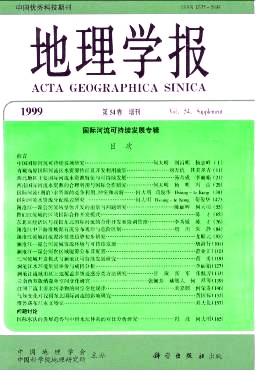Ni Shaoxing, Qin Kun, Jiang Jianjun, Liu Yansui
The method involves the following steps. (1) The study area is first divided into several regions, each with relatively similar features such as soil, topography, ground water level, location attributes and income level. (2) In each region, a number of reference plots are identified, each bordering several other plots. The characteristics of a reference plot such as its physical features, land management, major crops, crop yield, plot size and shape should typify those of the adjacent plots. (3) Calculate the price of each reference plot based on its net annual income using the equation T=(O-I)/Sr where T is the price of a reference plot, O is its gross annual income, I is total annual expenses, S is its areal size, and r is the rate of return. (4) Establish a list of factors affecting land price in each region and determine their weights based on the Delphi measurement method. (5) Rank the factors and assign appropriate points to them. (6) In a region, delineate valuation land plots based on physical features, plot location, field infrastructure, major crops and crop yield. (7) Calculate the total points for each valuation land plot using the equation V = F i * W i where V is total points of the plot, F i is the points assigned to each factor affecting the price of the plot, and W i is the weights of the factors. (8) Calculate the average value of land price per point in a region using the equation K=1/n∑ni=1 Pi/Fi where K is the average value of land price per point, P i is the value of price of the reference plot, F i is the total points of the reference plot, and n is the number of reference plots in a region. (9) Calculate the price for all of the valuation land plots in a region using the equation P=V*k where P is price of a valuation land plot, V is the total points of the plot, and K is the average price per point of the region in which the plot is located. (10) Check the calculated land price through a comparison between the price obtained by using the approach described in this paper with the price calculated by income approach for the same sampling plot. (11) Rank the calculated land prices for all plots in the study area according to the limitation values of each class that are obtained from a statistical analysis of land price distribution against the area of all land plots in the study area. With the assistance of GIS technology, the method was used to appraise the price of cultivated land in Yudai Township, Liuhe County, Nanjing City. The results show that the approach is acceptable and has the advantages of being simple and practical. However, several points should be noted. The number of cultivated land regions to be delineated from a study area and the selection of the factors affecting land price must be in line with the local conditions. Also, the effects of such factors as variation in land management and income on land price must be considered when indices of income and expenses are used to calculate the net annual income. Moreover, to ensure the accuracy of land price appraisal, it is necessary to select an appropriate rate of return which is in line with the level of economic development of the study area.
